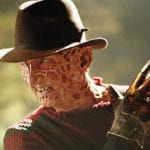 Politics
Politics  Politics
Politics  Weird Stuff
Weird Stuff 10 Eggs-traordinarily Odd Eggs
 History
History 10 Desperate Last Stands That Ended in Victory
 Animals
Animals Ten Times It Rained Animals (Yes, Animals)
 Mysteries
Mysteries 10 Devastating Missing Child Cases That Remain Unsolved
 Creepy
Creepy 10 Scary Tales from the Middle Ages That’ll Keep You up at Night
 Humans
Humans 10 One-of-a-kind People the World Said Goodbye to in July 2024
 Movies and TV
Movies and TV 10 Holiday Movies Released at Odd Times of the Year
 Politics
Politics 10 Countries Where Religion and Politics Are Inseparable
 Weird Stuff
Weird Stuff 10 Freaky Times When Famous Body Parts Were Stolen
 Politics
Politics The 10 Most Bizarre Presidential Elections in Human History
 Weird Stuff
Weird Stuff 10 Eggs-traordinarily Odd Eggs
 History
History 10 Desperate Last Stands That Ended in Victory
Who's Behind Listverse?

Jamie Frater
Head Editor
Jamie founded Listverse due to an insatiable desire to share fascinating, obscure, and bizarre facts. He has been a guest speaker on numerous national radio and television stations and is a five time published author.
More About Us Animals
Animals Ten Times It Rained Animals (Yes, Animals)
 Mysteries
Mysteries 10 Devastating Missing Child Cases That Remain Unsolved
 Creepy
Creepy 10 Scary Tales from the Middle Ages That’ll Keep You up at Night
 Humans
Humans 10 One-of-a-kind People the World Said Goodbye to in July 2024
 Movies and TV
Movies and TV 10 Holiday Movies Released at Odd Times of the Year
 Politics
Politics 10 Countries Where Religion and Politics Are Inseparable
 Weird Stuff
Weird Stuff 10 Freaky Times When Famous Body Parts Were Stolen
10 Cinematic Chillers and Thrillers Based on Horrific Crimes
Horror and thriller films “have legs,” as they say in the Hollywood film industry, meaning that they have long-lasting appeal. Not surprisingly, the true stories on which many such movies are based also have legs, intriguing generations of moviegoers long after the actual crimes that inspired them have been solved.
These 10 cinematic chillers and thrillers based on horrific crimes are no exceptions. Like the movies they are based on, the crimes—chillers and thrillers in their own right—continue to horrify us as much today as when they were first committed.
Related: 10 Gruesome Crimes Fit For Horror Movies
10 A Place in the Sun
Directed by George Stevens and starring Montgomery Clift, Elizabeth Taylor, and Shelley Winters, A Place in the Sun (1951) is based on the same horrendous crime that inspired author Theodore Dreiser to write his 1925 novel An American Tragedy: Chester Gillette’s 1906 murder of his girlfriend, Grace Brown.
Brown had moved to Cortland, New York, seeking the excitement and glamour for which she had longed as a child growing up on a dairy farm in New York’s Otselic Valley. In Cortland, she took a job at the Gillette Skirt Factory. There, she met the owner’s son, Chester. They began a secret romance, and, despite Gillette’s concern that Brown was not “suitable” to become a member of his family, he fathered a child by her. After she told him the news, perhaps hoping he would marry her, she returned to her parents’ home to have the baby.
Gillette asked her to accompany him to Big Moose Lake, located about 200 miles northeast of Cortland, in the shadow of the Adirondack Mountains in upstate New York, a beautiful, serene setting perfect for boating.
A sign near the lake commemorates the occasion: “On July 11, 1906, Chester Gillette and Grace Brown left here for a boat trip….” He planned to propose! Brown thought. However, as the rest of the sign’s text reads, the boat trip ended “in her death and his 1908 execution for murder.”
The rented boat was not returned, and a search for the missing couple was launched. Finally, Brown’s body was found, along with the capsized boat. The victim’s killer had struck her with a tennis racket, and she’d fallen into the lake, where Gillette had drowned her. The news of her pregnancy had been unwelcome; he had not wanted to be a father, and he had not wanted to marry her.
After killing her, Gillette fled the scene, but he was arrested in a nearby hotel, where he was found hiding in a room. He insisted he did not know Brown, but the love letters he had exchanged with her, which prosecutors shared with the jury during Gillette’s 1908 trial, told a different story. Convicted, he was executed the same year at Auburn Prison.[1]
9 Anatomy of a Murder
It is 1952. Allegedly, a rape has occurred, and the husband has murdered the suspected rapist. He is tried for murder in the first degree. The defense attorney attempts to get his client off, even though a “crowd” of witnesses observed the murder—a shooting—as it occurred in the Lumberjack Tavern in the unincorporated community of Big Bay, Michigan.
The 1958 novel Anatomy of a Murder by attorney John Voelker (writing as Robert Traver) recounts this thrilling crime and is the basis for the 1959 movie of the same title. It was directed by Otto Preminger and starred James Stewart and Lee Remick. Both the book and the film are based on an actual case: Voelker’s successful defense of Coleman Peterson.
Could Voelker’s defense have swayed juries today? That’s the question that former Army Judge Advocate Eugene Milhizer, author of Dissecting Anatomy of a Murder, investigates. How Coleman committed the dastardly deed left Voelker with little room to maneuver in his defense, Milhizer suggests, since it amounted to “a public execution.” However, Voelker was able to persuade the jury that Coleman should be acquitted based on his client’s having been seized by an “irresistible impulse” that had rendered the killer himself a victim of temporary insanity.
Such a defense might well fail today, Milhizer suspects. Times were different in the 1950s, he points out, when the public tended to look more favorably on the possibilities of rehabilitation and on criminals’ rights. The Model Penal Code, he says, was intended for states’ use when such attitudes were the norm. It also allowed the possibility of an acquittal on the grounds of “cognitive disability,” the inability to know right from wrong, or “volitional disability,” the inability to exercise self-control, despite knowing right from wrong.
After John Hinckley, Jr., was acquitted of attempting to assassinate President Ronald Reagan on the basis of insanity, Congress and the American public were incensed. Many states adopted the federal insanity statute that Milhizer says “not only [places] the burden on the defendant to prove he’s insane…but [also] removes… ‘irresistible impulse’ as a defense.” Nevertheless, Milhizer admires Voelker’s story, which he finds “compelling for all sorts of reasons.” [2]
8 The Honeymoon Killers
Janus Films calls The Honeymoon Killers (1969), directed by Leonard Kastle, “a stark portrayal of the desperate lengths to which a lonely heart will go to find true love,” not that the victims of Martha Beck, played by Shirley Stoler, and Raymond Fernandez, portrayed by Tony Lo Bianco, ever found true love in their encounters with these serial killers.
As Dirk C. Gibson points out in Serial Killing for Profit: Multiple Murder for Money, Beck and Fernandez are rare, if not unique, in one respect. Most serial killers use the same modus operandi every time they strike. Yet, Beck and Fernandez employed “a different MO for each crime,” which indicates that the couple’s murders were more or less unplanned, spontaneous events, the motive for which was always the same: financial gain. The murderers were not above killing even “a baby and two elderly women.”
Beck and Fernandez were an odd couple. “Despite baldness and questionable looks,” Fernandez was a ladies’ man, Gibson writes, and Beck was “larger than life literally and figuratively,” her weight having been estimated as between 200 and 300 pounds.
A “puny” boy, Fernandez had an unhappy childhood and tended to daydream. As an adult, in a 1945 accident aboard a ship, he suffered a head injury, which “changed his personality completely”; thereafter, he embarked on a career of crime. During a period of incarceration, he embraced voodoo, attributing his sway with women to his practice of the religion. Between crimes, his vocation was that of a gigolo.
Beck was born in Milton, Florida, and may have been “raped by her brother” when she was 13 years old, Gibson says. Large even as a child, due to a “glandular condition,” she was teased mercilessly by her peers to the extent that she “became a recluse.” Sexually mature at age 10, she was also sexually “obsessed” and enjoyed “bizarre sex.” She wed three men, having two children by Alfred Beck, before moving to California, where she met Fernandez through a lonely-hearts ad she placed. They became partners not only in romance but in murder as well.
Although there is no definitive tally of their murders, they are suspected of having killed between three and twenty victims.[3]
7 Murder on the Orient Express
The 1974 movie Murder on the Orient Express, directed by Sidney Lumet, has an all-star cast, with Albert Finney as detective Hercule Poirot. It is based on the Agatha Christie bestselling 1934 detective novel by the same title. As The Home of Agatha Christie website points out, the novel, and, therefore, the movie, is based on “a real life crime,” that of Bruno Hauptmann, the kidnapper of Charles Lindberg, Jr., the famous aviator’s infant son who “was taken from his crib in the middle of the night.”
Christie, her official website explains, “rewrote this case for [her novel] Murder on the Orient Express when she crafted the subplot of the Armstrong kidnapping case.” Charles Jr. is replaced by Daisy Armstrong, whose mother succumbs to complications of her pregnancy after the girl’s remains are discovered, and “the devastated father kills himself.” As a result, “an innocent servant” who becomes a suspect in the father’s apparent murder commits suicide.
A close approximation of this subplot appears in the movie’s plot, with gangster Lanfranco Cassetti substituting for Hauptmann and Daisy again replacing Charles Jr. The Armstrongs are represented by Sonia, who dies in childbirth, and her husband Hamish, who afterward commits suicide. The couple’s French maid, Paulette, is the suspected servant.[4]
6 Eaten Alive
Eaten Alive (1976), directed by Tobe Hooper and starring Neville Brand and Carolyn Jones, concerns Judd, a mad hotel owner in eastern Texas, who feeds his victims to his giant pet alligator, which inhabits a nearby swamp. The plot sounds unlikely, to say the least, which makes the fact that the movie is based on a true story even more astounding.
The movie’s story is inspired by tavern owner Joe Ball of Elmendorf, Texas, who, during the 1930s, kept five alligators in his backyard. Although he is known to have killed two women, Ball may have murdered more. According to reporter Rebecca Hawkes, his known victims include his waitress Minnie Gotthardt and “another of Ball’s women,” 22-year-old Hazel Brown, whose bodies he disposed of as pet food for his hungry reptiles, thereby earning himself the sobriquet “Alligator Man.” Between the meals of Ball’s human victims, Hawkes reports, his alligators enjoyed snacks, it is said, courtesy of his bar’s patrons, who tossed live dogs, cats, and other stray animals to the reptiles.
Then, someone reported an odd-smelling barrel behind a neighbor’s barn. Had Ball, for some reason, stored human remains inside the barrel instead of feeding them to his alligators? Perhaps he was storing them there temporarily until he could feed the hungry reptiles. In any case, local police took an interest in him. The tavern owner persuaded the lawmen to allow him one last drink before escorting him to jail. When they accommodated him, he seized the opportunity to retrieve a gun stashed near his cash register and shot himself in the heart. Ball’s handyman, Clifford Wheeler, then confessed to having aided and abetted Ball in committing the murders and admitted to helping him dispose of the women’s bodies.
These were the only two murders that could be proven against Ball, and it may well be that at least some of the others attributed to him resulted from the legendary status he acquired among the locals. As Hawkes suggests, “In a strange way, it’s almost as if people…want the rumours to be true. There’s something inherently horrific about the prospect of ‘being eaten’: it’s a deep-set, psychological fear, that taps into childhood tales of Hansel and Gretel and Little Red Riding Hood.”[5]
5 Looking for Mr. Goodbar
Intentionally or not, Looking for Mr. Goodbar is a cautionary tale of sorts. Its plot is an implicit warning to young women who go looking for love in all the wrong places. In the 1977 movie, directed by Richard Brooks, Diane Keaton, playing Theresa Dunn, a young teacher in New York City, meets Richard Gere’s Tony in a bar. She takes him to her apartment, where he drugs her after taking cocaine with him. She then seeks other lovers, during and after Tony’s return, until, finally, she encounters Gary (Tom Berenger), a bisexual man who kills her in a fit of rage when, unable to have sex with her, he mistakenly assumes that she is questioning his masculinity.
The movie is based on the 1973 murder of an actual teacher, 28-year-old Roseanne Quinn, who was stabbed to death after making the fatal mistake of picking up prison escapee John Wayne Wilson in a bar and taking him home with her for a one-night stand. In her article about the crime, writer Cheryl Eddy spells out a possible theme for both the actual story and its fictional accounts, as presented in Judith Rossner’s best-selling 1975 novel and the movie based on it: “It seemed like hip, sexy fun, until the Quinn case gave a stark reminder of the dangers of letting strangers into your bedroom.”
When Quinn didn’t answer her telephone or show up for work for two days in a row, the school principal at which she taught dispatched a male teacher to her studio apartment, but Quinn did not answer his knock. The building’s superintendent unlocked her door. Inside, they found Quinn lying on her fold-out bed, dead from 18 stab wounds. According to an account of the crime, “a red candle had been thrust into her vagina, and a statue lay across her face.” Her killer had covered her corpse with a blue bathrobe.
Police canvassed the neighborhood, discovering that, at night, Quinn had frequented such local bars as the Copper Hatch and W. M. Tweed’s. While she was at Tweed’s, she had drunk with and talked to Charlie Smith, who was with another man, Geary Guest. Becoming bored, Guest left soon after the men had arrived at the bar. Smith stayed. He was visiting New York from Chicago, seeking work, he said. A regular customer who drew caricatures sketched two for Smith: a Mickey Mouse drawing and a picture of Donald Duck. Police found both caricatures at Quinn’s apartment.
Smith, who was actually Wilson, told Guest that he had stabbed Quinn to death after she insulted him when he had been too intoxicated to perform, and, after showering, dressing, and cleaning up the crime scene, he had left. Guest gave him some money, and Wilson went to Miami to see his pregnant wife before visiting his brother in Springfield, Illinois.
Police, meanwhile, released a sketch of a suspect, and Guest, seeing a resemblance to himself, called a lawyer, who advised him to notify the authorities. The Manhattan assistant district attorney agreed to give Guest immunity in exchange for his testimony against Wilson, who was subsequently arrested at his brother’s residence. Extradited to New York City, Wilson used sheets to hang himself while awaiting charges.[6]
4 Badlands
Described by a Filmsite reviewer as a “remarkable and impressive,” if “alienating and disturbing,” independent film about “two estranged young fugitives who are mad lovers,” Badlands (1973), directed by Terrence Malick, stars Martin Sheen and Sissy Spacek as Kit Carruthers and Holly Sargis.
After Kit murders Holly’s father, the lovers fake their own deaths before setting up housekeeping in a treehouse that they construct in a remote location. Bounty hunters, would-be informants, and a couple who let the duo hide out at their house occasion additional murders until, tired of running, Holly surrenders to the police and is sentenced to probation. Captured, Kit is executed.
Malick’s plot is based on the 1958 killing spree committed by Charles Starkweather and his 14-year-old girlfriend Caril Ann Fugate, whose 11 victims included Fugate’s mother, stepfather, and two-year-old sister. Fugate received a life sentence, but she was paroled after 18 years; Starkweather was electrocuted.[7]
3 Double Indemnity & The Postman Always Rings Twice
Double Indemnity (1944), directed by Billy Wilder, stars Fred McMurray as insurance salesman Walter Neff, Barbara Stanwyck as Phyllis Dietrichson, and Tom Powers as their victim, Phyllis’s husband, Mr. Dietrichson.
By seducing Neff, Phyllis gets him to write her an insurance policy on her husband. The policy includes a double indemnity clause, paying double in the event that the insured’s death is accidental. Phyllis drives her husband to a train, and Neff, hidden in the back seat, murders him before boarding the train himself, jumping off, and dragging the dead man’s body onto the tracks.
However, the insurance company suspects either suicide or murder rather than accidental death and refuses to pay. Later, Phyllis, eavesdropping, overhears insurance adjuster Barton Keyes telling Neff that Phyllis and an accomplice are suspected of killing her husband for his insurance money. A double-cross ends with one of the partners in crime murdered by the other. The surviving partner, wounded, waits for the arrival of an ambulance—and the police.
In The Postman Always Rings Twice (1946), directed by Tay Garnett, Cora Smith (Lana Turner) and Frank Chambers (John Garfield), the drifter who falls for her after they meet at the diner owned by her husband Nick (Cecil Kellaway), conspire to murder Nick and start over together as the new owners of Nick’s diner.
Several attempts to murder Nick fail before the killers are finally successful. However, they turn on one another when the district attorney investigates Nick’s death as suspicious, and Cora receives probation. Although they marry and have a child, their relationship remains problematic, and Frank kills Cora and their child in a car accident, for which, ironically, he is convicted of their murders and is executed.
Both Double Indemnity and The Postman Always Rings Twice are based on 1943 novels by the same titles, both written by author James M. Cain. The novels, in turn, are based on the 1927 crime that Ruth Snyder and her lover, Judd Gray, committed: the murder of Snyder’s husband Albert for his life insurance.
After her murder conviction, Snyder predicted that she would never be executed: “This is just a formality,” she insisted. “I have just as good a chance now of going free as I had before the trial started.” Instead, as New York Times writer Janet Maslin declares, Snyder “actually wound up with her hair on fire when she was electrocuted at Sing Sing in 1928.”[8]
2 Scream
Directed by Wes Craven, Scream (1996) stars Neve Campbell as Sidney Prescott, an intended victim who turns out to be her would-be killer’s killer. Skeet Ulrich, as Billy Loomis, and Matthew Lillard, as Stu Macher, play the murderers, who blame Sidney’s mother, Maureen (Lynn McRee), for having driven away Billy’s mother after she had had an affair with Billy’s father (C. W. Morgan).
Having already killed Maureen, the boys are now murdering their fellow high school students, planning to pin the killings on their hostage, Sidney’s father (Lawrence Hecht). More or less a device to causally link the slasher film’s series of murders together, the plot seems unlikely, to say the least. Still, the movie won four Saturn Awards and other accolades, earned $173 million at the box office, and launched a series of sequels.
A 1990 crime in Gainesville, Florida, inspired Scream. Danny Rolling bungled his attempt to kill his father, who routinely abused his mother, “succeeding only in taking the man’s eye and ear,” reports D. DeGroot, but his next attempt at murder succeeded entirely. This second crime inspired Scream and led to Rolling’s becoming known by the nickname “The Gainesville Ripper.”
During a four-day crime spree in Gainesville, DeGroot writes, Rolling “would stalk, stab and kill” four coeds and a male college student after invading their apartments while they slept and “stabbing them in their beds.” First, though, he would rape the female students; then, he would kill them. Next, he would mutilate them, staging his victims’ “severed heads and corpses…in lewd sexual positions for authorities to find.” When his DNA was matched to the crime scene, he was arrested and charged with multiple counts of murder.
Rolling made it easy for the authorities by confessing to the crimes. He wanted to be “famous like Ted Bundy,” DeGroot explains. He was convicted and sentenced to death, and, on October 25, 2006, he was executed by lethal injection in the Florida State Prison. There is a clear difference between Rolling’s brutal murders and those depicted in Scream, as DeGroot points out: “In the movie, the killers are out for revenge. In real life, Rolling’s crimes were random and a matter of accessibility.”[9]
1 Alpha Dog
Alpha Dog (2006), directed by Nick Cassavetes, stars Emile Hirsch as drug dealer Johnny Truelove; Justin Timberlake as Johnny’s lieutenant, Frankie Ballenbacher; Anton Yelchin as Zack Mazursky; and Ben Foster as Jake Mazursky, Zack’s older brother. Johnny kidnaps Zack, whom he spots on the road after Zack has run away from home, planning to hold him until Jake pays an outstanding debt.
After a couple of Johnny’s associates dig a grave in a remote area in the mountains, one of them kills Zack, and they bury him. The remote grave is discovered, and the gang members involved in Zack’s kidnapping and murder are convicted of their crimes, receiving various sentences. Zack’s murderer, Elvis Schmidt (Shawn Hatosy), is sentenced to death.
According to NBC News, the true story behind Alpha Dog began in the West Hills section of Hollywood, California, among “million-dollar homes…swimming pools and tidy lawns.” After giving him repeated chances to reform, the parents of troubled Ben Markowitz finally told him to leave home. Not long after he did so, Markowitz became friends with Jesse James Hollywood, who resided nearby.
Dropping out of high school, Hollywood became a drug dealer, taking in enough money by age 19 to make “a big cash down payment” on a house of his own. His criminal associates were friends, and Hollywood made room for Markowitz. Despite their friendships, however, business always came first for Hollywood, and his crew were afraid of him—all of them, that is, except Markowitz, whom Hollywood himself feared. Markowitz had incurred a $1,200 debt with Hollywood, though, and the debt—and Markowitz’s refusal to pay up—made Hollywood angry enough in August 2000 to kidnap Markowitz’s younger half-brother Nick, with whom Markowitz was close.
When Hollywood learned that kidnapping could result in a sentence of life in prison, he decided to kill Nick or order him killed. That way, Nick could never testify against any of his abductors. Hollywood ordered Ryan Hoyt to commit the murder. A grave was dug in the mountains, and, bound with duct tape, Nick was taken to the site by his captors.
According to Los Angeles Magazine senior writer Jesse Katz, Ryan Hoyt “whacks Nick in the back of the head—cold cocks him [and] pulls out this Tech 9,” shooting his victim nine times. Nick “falls into this grave that had been dug for him, [and] they tuck the gun under Nick’s knees, [as they] now try to bury him,” but, as NBC News adds, “the grave [is] too shallow.” Located alongside a popular hiking trail, the burial site was spotted later, and leads poured in.[10]








